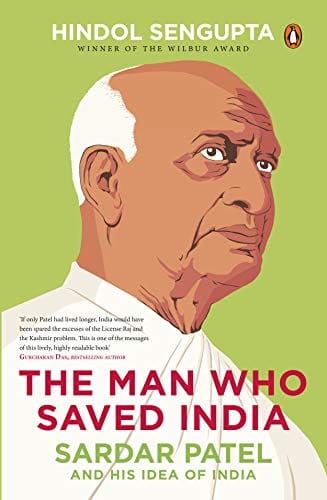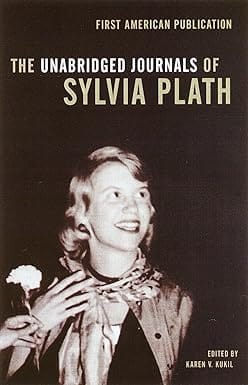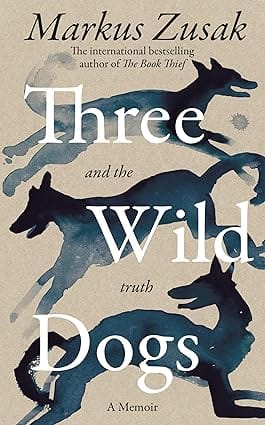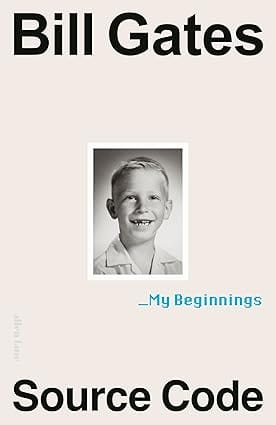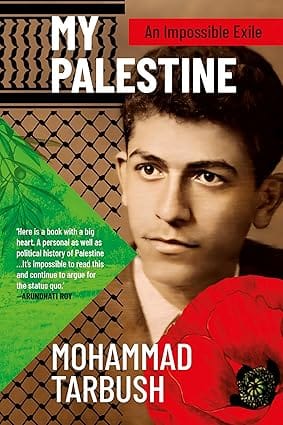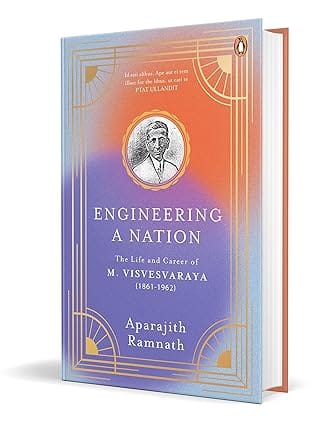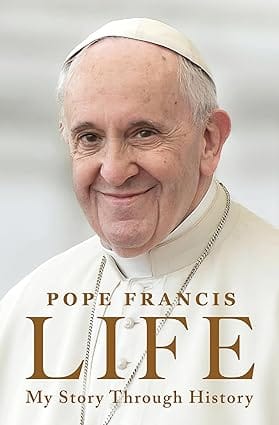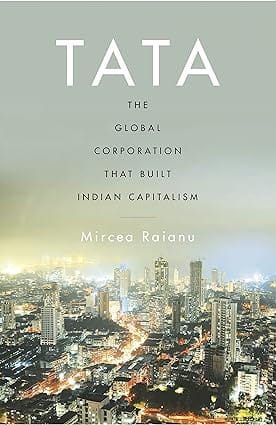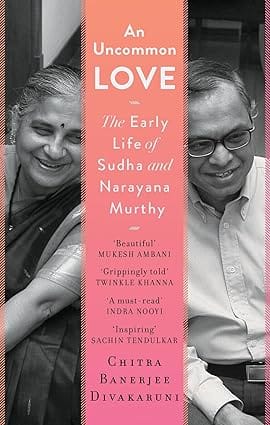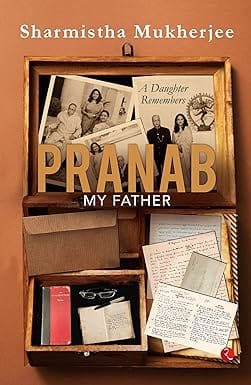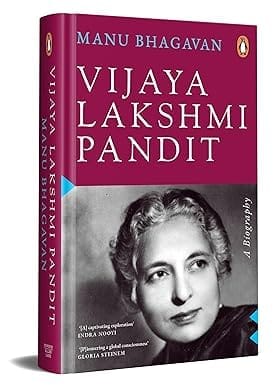-
Non-ficton
- Non-ficton
-
Contemporary Fiction
- Contemporary Fiction
-
Children
- Children
-
Comics & Graphic Novels
- Comics & Graphic Novels
-
Non-Fiction
- Non-Fiction
-
Fiction
- Fiction
There is perhaps no political figure in modern history who did more to secure and protect the Indian nation than Sardar Vallabhbhai Patel. But, ironically, seventy years after Patel brought together piece by piece the map of India by fusing the princely states with British India to create a new democratic, independent nation, little is understood or appreciated about Patel's enormous contribution to the making of India. Caricatured in political debate, all the nuances of Patel's difficult life and the daring choices he made are often lost, or worse, used as mere polemic. If Mahatma Gandhi was the spiritual core of India's freedom struggle and Jawaharlal Nehru its romantic idealism, it was Sardar Patel who brought in the vital pragmatism which held together the national movement and the first ideas of independent India. A naturally stoic man, Patel, unlike Gandhi or Nehru, wrote no personal history. He famously argued that its was better to create history than write it. This is why even his deepest misgivings and quarrels have been easily buried. But every warning that Patel left for India - from the dangers of allowing groups to create private militias to his thoughtful criticism on India's approach to Kashmir, Pakistan and China - are all dangerously relevant today. It is impossible to read about Patel, who died in 1950, and not feel that had he lived on, India might have been a different country. It is also impossible to ignore Patel and understand not only what the idea of India is but also what it could have been, and might be in the future. The Man Who Saved India is a sweeping, magisterial retelling of Sardar Patel's story. With fiercely detailed and pugnacious anecdotes, multiple award-winning, best-selling writer Hindol Sengupta brings alive Patel's determined life of struggle and his furious commitment to keep India safe. This book brings alive all the arguments, quarrels and clashes between some of the most determined people in Indian history and their battle to carve out an independent nation. Through ravages of a failing body broken by decades of abuse in and outside prison, Patel stands out in this book as the man who, even on his death bed, worked to save India. Hindol Sengupta's The Man Who Saved India is destined to define Patel's legacy for future generations.
Praise for the book:
Sardar Patel was the silent one of the trinity along with Gandhi and Nehru who dedicated his life. In the struggle for an independent India. His lasting legacy is a United India rather than the land which throughout history has-been split in rival warring kingdoms. Hindol Sengupta has given us the story of Sardar's life for the new generations of India so that they could understand and admire a unique personality. Read this book and discover India's history in the first half the last century. And reclaim your legacy.
- Lord Meghnad Desai, bestselling author and economist
'It is dangerous to put dreamers in power. Sardar Patel's pragmatism was the perfect antidote to Nehru's idealism in the early years of Independence. If only Patel had lived longer, India would have been spared the excesses of the License Raj and the Kashmir problem. This is one of the messages of this lively, highly readable book.'
- Gurcharan Das, bestselling author
The Man Who Saved India is the most authoritative and accessible biography of Sardhar Vallabhbhai Patel, lovingly referred to as the 'Iron Man of India'. In this book, written in his impeccable narrative style, Hindol Sengupta rescues the memory of the beloved leader of India from the vaults of obscurity. This book brings out the true story of independence as well as stability of India following it, which was achieved through sweat and blood of its leaders like Patel.
The Man who Saved India reverses one of the historical ironies of modern India through bringing into light many of the unknown facts of the life of Patel, based on the author's field visits, interviews, and extensive research, which is an onerous task in itself considering the fact that Patel neither maintained records of his work nor preserved his documents of communications.
Hindol begins the narration of larger than life tale of Patel describing his visit to the birth home of Patel in Nadiad, now in dilapidated condition, an image not unlike the less than optimal public memory of Patel in modern India.
Hindol discusses the numerous sacrifices Patel has made in public life bowing to the political ambitions of his peers, while never wavering from his duty to India. The Man who Saved India clearly charts the leadership skills and statesmanship of Patel during the numerous non-cooperation and civil disobedience movements such as Bardoli and Kheda Satyagrahas, and the timely military action in independent India. It was due to the sheer strength of resolve on the part of Patel, which has helped forge the Bharat that was to capture the imagination of the masses of independent India.
The hitherto unknown details of Patel's personal life and his complex relations with his peers and other contemporary national leaders including Gandhi, Nehru, and Bose, help understand the grace with which he gave up political positions more than once. In addition, the author also clearly describes the personal sacrifices Patel has made at the altar of mother India, not only of his personal life, but also of the life of his children, even to the chagrin of his family and friends.
The amazing result of author's copious research is the emergence of an exceptionally clear picture of Patel's life and leadership in the three decades leading up to the independence of India in addition to establishing Patel's key role in the formative years of India following independence, until his death. The Man who Saved India is a timely and much needed historical account of modern India.
The Man who Saved India is a must read for every Indian as well as every person interested in learning the true history of India.
- Lavanya Vemsani, Professor, Shawnee State University, Vice President, Ohio Academy of History, President & Cofounder, American Academy of Indic Studies
Every nation has its own narrative that is built over time, even centuries. For India and as Indians we claim ancient ancestry and are therefore, civilisational. Yet, we are a new democratic republic trying to find our place in the new tumultuous 21st century.
There comes a time when we cannot look forward without revisiting our past to see if the narrative of the past was complete, accurate and fair. For decades, the narrative has been that there were essentially two leaders in India - Mahatma Gandhi and his protégé Jawahar Lal Nehru, who together had led the country to independence. Their contribution to the cause of independence was monumental and this became the widely accepted truth. Yet there was another truth, long ignored in our national narrative.
Hindol Sengupta's book, The Man Who Saved India, provides the other truth. In a meticulously and extensively researched book, the young author brings to the reader the significant role that Sardar Vallabhbhai Patel played not only in our struggle for independence but in the consolidation of the new country. Valabhbhai Patel was truly a part of the Trinity, along with Mahatma Gandhi and Jawahar Lal, that led India to freedom. He was the man who ensured that this newfound independence did not collapse in a heap of dust. It was the Sardar who dealt with the reluctant Maharajas, Nawabs and the obdurate Nizam of Hyderabad, when they dreamt of returning to their feudal opulence outside modern India. Patel liquidated the princely states without liquidating the princes. It was his commitment, diplomatic and political skills along with the force of his personality that made unified India a reality.
The book begins with a description of what was once the ancestral home of this great man of India. This decrepit and rather lonely state of the house and its utter neglect is a clear indication that the prevalent narrative preferred to ignore Valabhbhai Patel's contribution. Gandhi knew the value of God and religion in an India that was subjugated. Nehru knew that if India had to talk about its future then there had to be a grand past of aloofness and elitism. It was Patel who was the hard realist who knew that democracy was not about daily plebiscites but hard decisions cloaked in egalitarianism. Nehru looked at the heavens for inspiration Patel looked at the ground beneath his feet for solutions. While Nehru wrote elegant prose and Gandhi spoke to the masses, it was left to Patel to worry over mundane matters about funds and their distribution. Patel was a man of few words and there is every reason to give him credit today for many of his arguments and ideas ranging from tackling Kashmir, the future of Pakistan and how socialism without industrialization could be dangerous for the country. His warnings about Kashmir, Tibet and China went unheeded.
The book is thus not only one of the finest biographies in recent times but is also a much-needed redefining of the roles played by Sardar Patel during India's freedom movement and as the great unifier. The author argues that Patel was not only a pillar of strength behind some of Gandhi's earlier successes to holding the country together.
The author quotes Patel's speech on 5 July 1947 where he warned, 'Our mutual conflicts and internecine quarrels and jealousies have in the past been the cause of our downfall and our falling victim to foreign domination a number of times. We cannot afford to fall into these errors or traps again.' Sardar Patel was relevant then as he is today. So is Hindol Sengupta's book.
- Vikram Sood, bestselling author and the former head of India's foreign intelligence agency, the Research and Analysis Wing
The Man Who Saved India is an excellent deep dive into the life and struggles of one of the tallest leaders in Indian history. Hindol Sengupta written a fascinating book full of insights on things that are rarely discussed - for instance, Patel's economic ideas or his key role as the man who raised critical funds for the Congress Party. This captivating book breaks many myths and throws new light on one of the most important figures in Indian history.
- Vijay Govindarajan, NYT and Wall Street Journal bestselling author, Coxe Distinguished Professor at the Tuck School of Business at Dartmouth College
A very engaging biography of Sardar Patel, the man and his times, by one of India's best young writers
- Sanjeev Sanyal, bestselling author and Principal Economic Advisor, Ministry of Finance, Government of India
The genre of popular history and biography has been experiencing a golden age and Hindol Sengupta's fluent biography of Sardar Vallabhai Patel joins a list of distinguished titles alongside Michael Axworthy's Sword of Persia, Nadir Shah and Roger Crowley's Constantinople, The Last Great Siege, 1453. Very welcome indeed that an eminently accessible account of the life and achievements of one of India's true great sons is now available to a new generation of readers.
- Gautam Sen, lecturer (retd.), London School of Economics and co-author of Analysing the Global Political Economy, Princeton University Press, 2009.
Rich with detail and illuminating insight, Hindol Sengupta's The Man Who Saved India brings alive Sardar Vallabhbhai Patel's indomitable spirit and tenacity in the face of constant challenges that would crush a weaker man. Few people immediately think of Patel when they think of men responsible for the shape and form of modern India. This is a great injustice, for, as Hindol explains with a wealth of anecdote and context, it was Patel who defined the very contours of the India we know today. This book is a must read.
- - Saradindu Mukherji, Member, Indian Council of Historical Research
Hindol writes popular, unpopular history. Another brilliant book, this time putting the untold story of one of India's greatest political leaders in front of today's readers in a way which makes it accessible and unputdownable. His work of putting together Sardar Patel's life story is strikingly accurate yet stunningly engrossing.
- Vikramjit Bannerjee, Senior Advocate, Supreme Court of India, and Advocate General of Nagaland
'This is one of those rare, great books which every Indian should read. After all, it is also about Vallabhbhai Patel, the man who created the modern state of India out of myriad fragments. Drawing upon a well-researched base of facts and writings, Sengupta emerges as a masterful storyteller who has weaved together a very coherent and absorbing story. The complex relationships among the leaders of the Indian freedom struggle are captured in all their subtle shades and colourful complexity. The end result is, for the reader, a more holistic understanding of Indian history, a much-needed filling up of certain gaps in our knowledge of the past, and a refreshingly enriched perspective on the architects of modern India'
-N.C. Suresh, UB Distinguished Professor, School of Management, State University of New York, Buffalo
- Home
- Biographies And Autobiographies
- The Man Who Saved India
The Man Who Saved India
SIZE GUIDE
- ISBN: 9780670089901
- Author: Hindol Sengupta
- Pages: 430
- Format: Hardback
Book Description
There is perhaps no political figure in modern history who did more to secure and protect the Indian nation than Sardar Vallabhbhai Patel. But, ironically, seventy years after Patel brought together piece by piece the map of India by fusing the princely states with British India to create a new democratic, independent nation, little is understood or appreciated about Patel's enormous contribution to the making of India. Caricatured in political debate, all the nuances of Patel's difficult life and the daring choices he made are often lost, or worse, used as mere polemic. If Mahatma Gandhi was the spiritual core of India's freedom struggle and Jawaharlal Nehru its romantic idealism, it was Sardar Patel who brought in the vital pragmatism which held together the national movement and the first ideas of independent India. A naturally stoic man, Patel, unlike Gandhi or Nehru, wrote no personal history. He famously argued that its was better to create history than write it. This is why even his deepest misgivings and quarrels have been easily buried. But every warning that Patel left for India - from the dangers of allowing groups to create private militias to his thoughtful criticism on India's approach to Kashmir, Pakistan and China - are all dangerously relevant today. It is impossible to read about Patel, who died in 1950, and not feel that had he lived on, India might have been a different country. It is also impossible to ignore Patel and understand not only what the idea of India is but also what it could have been, and might be in the future. The Man Who Saved India is a sweeping, magisterial retelling of Sardar Patel's story. With fiercely detailed and pugnacious anecdotes, multiple award-winning, best-selling writer Hindol Sengupta brings alive Patel's determined life of struggle and his furious commitment to keep India safe. This book brings alive all the arguments, quarrels and clashes between some of the most determined people in Indian history and their battle to carve out an independent nation. Through ravages of a failing body broken by decades of abuse in and outside prison, Patel stands out in this book as the man who, even on his death bed, worked to save India. Hindol Sengupta's The Man Who Saved India is destined to define Patel's legacy for future generations.
Praise for the book:
Sardar Patel was the silent one of the trinity along with Gandhi and Nehru who dedicated his life. In the struggle for an independent India. His lasting legacy is a United India rather than the land which throughout history has-been split in rival warring kingdoms. Hindol Sengupta has given us the story of Sardar's life for the new generations of India so that they could understand and admire a unique personality. Read this book and discover India's history in the first half the last century. And reclaim your legacy.
- Lord Meghnad Desai, bestselling author and economist
'It is dangerous to put dreamers in power. Sardar Patel's pragmatism was the perfect antidote to Nehru's idealism in the early years of Independence. If only Patel had lived longer, India would have been spared the excesses of the License Raj and the Kashmir problem. This is one of the messages of this lively, highly readable book.'
- Gurcharan Das, bestselling author
The Man Who Saved India is the most authoritative and accessible biography of Sardhar Vallabhbhai Patel, lovingly referred to as the 'Iron Man of India'. In this book, written in his impeccable narrative style, Hindol Sengupta rescues the memory of the beloved leader of India from the vaults of obscurity. This book brings out the true story of independence as well as stability of India following it, which was achieved through sweat and blood of its leaders like Patel.
The Man who Saved India reverses one of the historical ironies of modern India through bringing into light many of the unknown facts of the life of Patel, based on the author's field visits, interviews, and extensive research, which is an onerous task in itself considering the fact that Patel neither maintained records of his work nor preserved his documents of communications.
Hindol begins the narration of larger than life tale of Patel describing his visit to the birth home of Patel in Nadiad, now in dilapidated condition, an image not unlike the less than optimal public memory of Patel in modern India.
Hindol discusses the numerous sacrifices Patel has made in public life bowing to the political ambitions of his peers, while never wavering from his duty to India. The Man who Saved India clearly charts the leadership skills and statesmanship of Patel during the numerous non-cooperation and civil disobedience movements such as Bardoli and Kheda Satyagrahas, and the timely military action in independent India. It was due to the sheer strength of resolve on the part of Patel, which has helped forge the Bharat that was to capture the imagination of the masses of independent India.
The hitherto unknown details of Patel's personal life and his complex relations with his peers and other contemporary national leaders including Gandhi, Nehru, and Bose, help understand the grace with which he gave up political positions more than once. In addition, the author also clearly describes the personal sacrifices Patel has made at the altar of mother India, not only of his personal life, but also of the life of his children, even to the chagrin of his family and friends.
The amazing result of author's copious research is the emergence of an exceptionally clear picture of Patel's life and leadership in the three decades leading up to the independence of India in addition to establishing Patel's key role in the formative years of India following independence, until his death. The Man who Saved India is a timely and much needed historical account of modern India.
The Man who Saved India is a must read for every Indian as well as every person interested in learning the true history of India.
- Lavanya Vemsani, Professor, Shawnee State University, Vice President, Ohio Academy of History, President & Cofounder, American Academy of Indic Studies
Every nation has its own narrative that is built over time, even centuries. For India and as Indians we claim ancient ancestry and are therefore, civilisational. Yet, we are a new democratic republic trying to find our place in the new tumultuous 21st century.
There comes a time when we cannot look forward without revisiting our past to see if the narrative of the past was complete, accurate and fair. For decades, the narrative has been that there were essentially two leaders in India - Mahatma Gandhi and his protégé Jawahar Lal Nehru, who together had led the country to independence. Their contribution to the cause of independence was monumental and this became the widely accepted truth. Yet there was another truth, long ignored in our national narrative.
Hindol Sengupta's book, The Man Who Saved India, provides the other truth. In a meticulously and extensively researched book, the young author brings to the reader the significant role that Sardar Vallabhbhai Patel played not only in our struggle for independence but in the consolidation of the new country. Valabhbhai Patel was truly a part of the Trinity, along with Mahatma Gandhi and Jawahar Lal, that led India to freedom. He was the man who ensured that this newfound independence did not collapse in a heap of dust. It was the Sardar who dealt with the reluctant Maharajas, Nawabs and the obdurate Nizam of Hyderabad, when they dreamt of returning to their feudal opulence outside modern India. Patel liquidated the princely states without liquidating the princes. It was his commitment, diplomatic and political skills along with the force of his personality that made unified India a reality.
The book begins with a description of what was once the ancestral home of this great man of India. This decrepit and rather lonely state of the house and its utter neglect is a clear indication that the prevalent narrative preferred to ignore Valabhbhai Patel's contribution. Gandhi knew the value of God and religion in an India that was subjugated. Nehru knew that if India had to talk about its future then there had to be a grand past of aloofness and elitism. It was Patel who was the hard realist who knew that democracy was not about daily plebiscites but hard decisions cloaked in egalitarianism. Nehru looked at the heavens for inspiration Patel looked at the ground beneath his feet for solutions. While Nehru wrote elegant prose and Gandhi spoke to the masses, it was left to Patel to worry over mundane matters about funds and their distribution. Patel was a man of few words and there is every reason to give him credit today for many of his arguments and ideas ranging from tackling Kashmir, the future of Pakistan and how socialism without industrialization could be dangerous for the country. His warnings about Kashmir, Tibet and China went unheeded.
The book is thus not only one of the finest biographies in recent times but is also a much-needed redefining of the roles played by Sardar Patel during India's freedom movement and as the great unifier. The author argues that Patel was not only a pillar of strength behind some of Gandhi's earlier successes to holding the country together.
The author quotes Patel's speech on 5 July 1947 where he warned, 'Our mutual conflicts and internecine quarrels and jealousies have in the past been the cause of our downfall and our falling victim to foreign domination a number of times. We cannot afford to fall into these errors or traps again.' Sardar Patel was relevant then as he is today. So is Hindol Sengupta's book.
- Vikram Sood, bestselling author and the former head of India's foreign intelligence agency, the Research and Analysis Wing
The Man Who Saved India is an excellent deep dive into the life and struggles of one of the tallest leaders in Indian history. Hindol Sengupta written a fascinating book full of insights on things that are rarely discussed - for instance, Patel's economic ideas or his key role as the man who raised critical funds for the Congress Party. This captivating book breaks many myths and throws new light on one of the most important figures in Indian history.
- Vijay Govindarajan, NYT and Wall Street Journal bestselling author, Coxe Distinguished Professor at the Tuck School of Business at Dartmouth College
A very engaging biography of Sardar Patel, the man and his times, by one of India's best young writers
- Sanjeev Sanyal, bestselling author and Principal Economic Advisor, Ministry of Finance, Government of India
The genre of popular history and biography has been experiencing a golden age and Hindol Sengupta's fluent biography of Sardar Vallabhai Patel joins a list of distinguished titles alongside Michael Axworthy's Sword of Persia, Nadir Shah and Roger Crowley's Constantinople, The Last Great Siege, 1453. Very welcome indeed that an eminently accessible account of the life and achievements of one of India's true great sons is now available to a new generation of readers.
- Gautam Sen, lecturer (retd.), London School of Economics and co-author of Analysing the Global Political Economy, Princeton University Press, 2009.
Rich with detail and illuminating insight, Hindol Sengupta's The Man Who Saved India brings alive Sardar Vallabhbhai Patel's indomitable spirit and tenacity in the face of constant challenges that would crush a weaker man. Few people immediately think of Patel when they think of men responsible for the shape and form of modern India. This is a great injustice, for, as Hindol explains with a wealth of anecdote and context, it was Patel who defined the very contours of the India we know today. This book is a must read.
- - Saradindu Mukherji, Member, Indian Council of Historical Research
Hindol writes popular, unpopular history. Another brilliant book, this time putting the untold story of one of India's greatest political leaders in front of today's readers in a way which makes it accessible and unputdownable. His work of putting together Sardar Patel's life story is strikingly accurate yet stunningly engrossing.
- Vikramjit Bannerjee, Senior Advocate, Supreme Court of India, and Advocate General of Nagaland
'This is one of those rare, great books which every Indian should read. After all, it is also about Vallabhbhai Patel, the man who created the modern state of India out of myriad fragments. Drawing upon a well-researched base of facts and writings, Sengupta emerges as a masterful storyteller who has weaved together a very coherent and absorbing story. The complex relationships among the leaders of the Indian freedom struggle are captured in all their subtle shades and colourful complexity. The end result is, for the reader, a more holistic understanding of Indian history, a much-needed filling up of certain gaps in our knowledge of the past, and a refreshingly enriched perspective on the architects of modern India'
-N.C. Suresh, UB Distinguished Professor, School of Management, State University of New York, Buffalo
Related Books
User reviews
NEWSLETTER
Subscribe to get Email Updates!
Thanks for subscribing.
Your response has been recorded.

India's Iconic & Independent Book Store offering a vast selection of books across a variety of genres Since 1978.
"We Believe In The Power of Books" Our mission is to make books accessible to everyone, and to cultivate a culture of reading and learning. We strive to provide a wide range of books, from classic literature, sci-fi and fantasy, to graphic novels, biographies and self-help books, so that everyone can find something to read.
Whether you’re looking for your next great read, a gift for someone special, or just browsing, Midland is here to make your book-buying experience easy and enjoyable.
We are shipping pan India and across the world.
For Bulk Order / Corporate Gifting
 +91 9818282497 |
+91 9818282497 |  [email protected]
[email protected]
Click To Know More
INFORMATION
POLICIES
ACCOUNT
QUICK LINKS
ADDRESS
Shop No.20, Aurobindo Palace Market, Near Church, New Delhi

